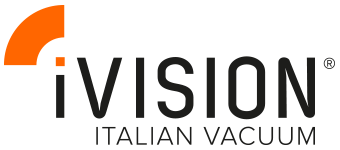
Purchasing an industrial vacuum cleaner requires careful consideration. There are a number of factors to consider to ensure that the vacuum system chosen meets the customer’s specific needs. That is why, before we propose a vacuum cleaner, we ask our customers a series of fundamental questions that allow us to determine the best vacuum solutions for their machines or work environments. Let’s see together into what these questions are and why they are so crucial.
INTEGRATION OR STAND-ALONE USE?
The main question we ask our customers is whether the vacuum cleaner will be connected to a machine (integrated) or whether it will be used manually (stand alone) or in a centralized system. The answer to this question determines the type of configuration needed and helps us customize the solution. Let’s look at the questions in detail together:
HYPOTHESIS 1: INTEGRATION
If the customer requires a system integrated with a machine, here are some of the specific questions we ask:
- To which machine will the vacuum cleaner be connected?
Knowing the characteristics of the machine allows us to identify the specific range of iVision vacuum cleaners best suited to the customer’s needs.
- How many dedicated suction nozzles are on the machine and what are their diameters?
This information helps us ensure vacuum cleaner compatibility and select an appropriate fan or turbine for the system.
- What material is to be vacuumed and what is the particle size?
The type of material (chips, dust, etc.) and particle size determine which configuration of our vacuum cleaner (standard or premium) to propose.
- What is the distance between the vacuum cleaner and the machine?
The distance directly affects the power required to ensure effective suction.
- Is any type of lubricant present in the machining process?
The presence of lubricants could affect and thus necessitate a customized approach to ensure proper operation of the vacuum cleaner.
- What is the average amount of material to be vacuumed per unit of time (day, shift, hour, etc.)?
This information is critical to properly size the system and ensure maximum performance.
HYPOTHESIS 2: STAND-ALONE USE
If the customer will use the vacuum cleaner manually and thus not connected to any machine, the questions we ask will be different:
- What type of material is to be vacuumed?
The material to be vacuumed affects the power of the vacuum, therefore, it would be good to understand the specific gravity and particle size of these materials.
- What is the distance between the collection point and the vacuum cleaner?
The distance, or the length of the hoses, can affect the performance of the vacuum cleaner.
- Are there any height differences that need to be addressed?
If there are height differences, more power may be needed to ensure efficient vacuuming.
- What is the proportion of oil to chips?
In case of mixtures of materials such as oil and chips, knowing the proportions helps us choose the most appropriate suction solution between standard and premium configuration.
- Will the vacuum cleaner be used sporadically or intensively?
The type of use determines which vacuum cleaner model is most suitable between single-phase and three-phase.
- What is the amount of material to be vacuumed per unit of time (day, shift, hour, etc.)?
The amount vacuumed in each period is crucial in defining the capacity and type of collection containers of our vacuum cleaner.
HYPOTHESIS 3: CENTRALIZED SYSTEM
For more complex systems, we often recommend a centralized system, which can be applied in several ways:
- Integration mode of application: An integrated centralized system allows multiple machines to be served simultaneously, optimizing efficiency.
- Stand-alone application mode: In addition to machines, manual vacuum stations can be installed along the plant for occasional cleaning or in specific areas.
- A mix of the two: This option allows the best of both solutions, combining automatic and manual vacuuming in one centralized system.
TRUST OUR IVISION VACUUM EXPERTS
Every industrial vacuum system designed by iVision Vacuum is designed to ensure maximum efficiency and productivity in every industry and work environment. The questions we ask our customers before purchasing a vacuum cleaner give us an in-depth understanding of their specific needs, enabling us to offer customized solutions. Whether it is an integrated, stand-alone or centralized system, our expertise allows us to propose the most effective solutions for each industrial application.






